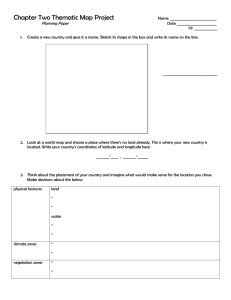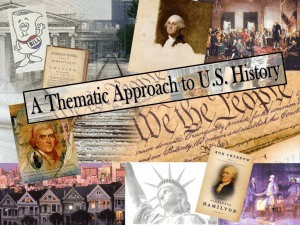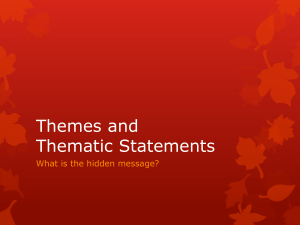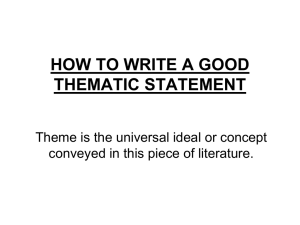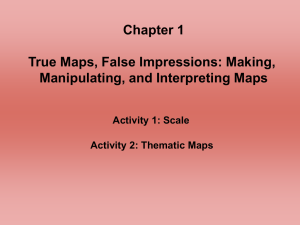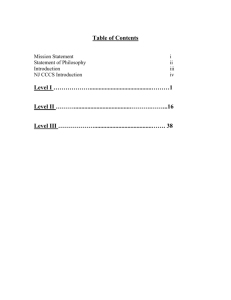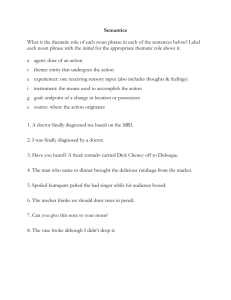Sample Lesson Plan
advertisement
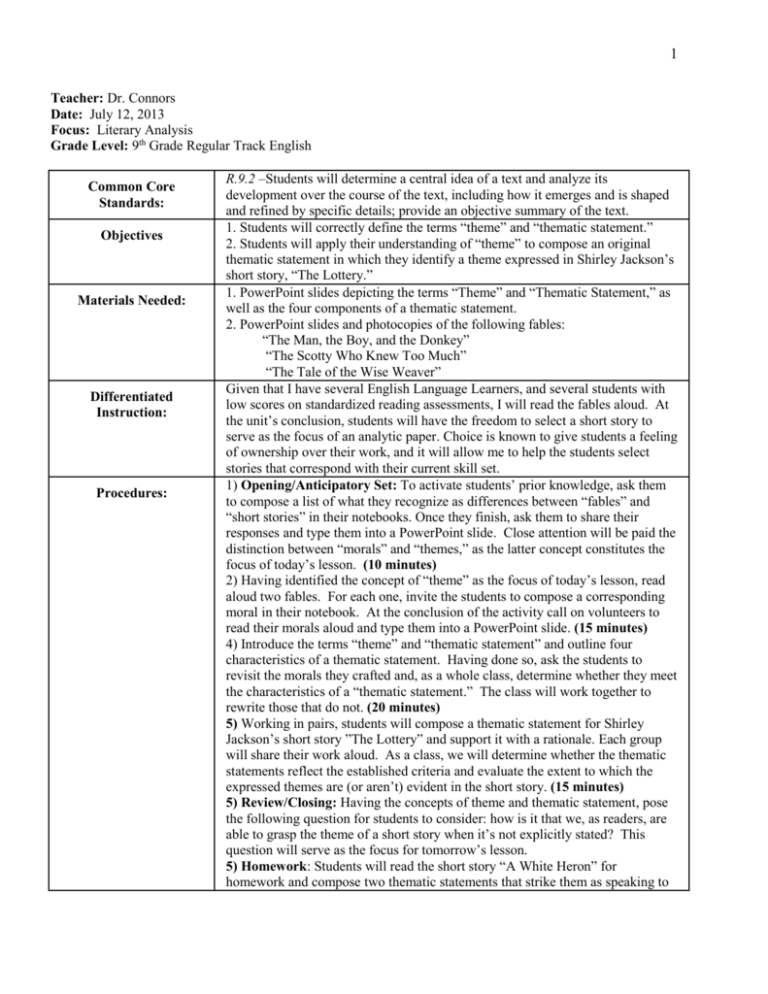
1 Teacher: Dr. Connors Date: July 12, 2013 Focus: Literary Analysis Grade Level: 9th Grade Regular Track English Common Core Standards: Objectives Materials Needed: Differentiated Instruction: Procedures: R.9.2 –Students will determine a central idea of a text and analyze its development over the course of the text, including how it emerges and is shaped and refined by specific details; provide an objective summary of the text. 1. Students will correctly define the terms “theme” and “thematic statement.” 2. Students will apply their understanding of “theme” to compose an original thematic statement in which they identify a theme expressed in Shirley Jackson’s short story, “The Lottery.” 1. PowerPoint slides depicting the terms “Theme” and “Thematic Statement,” as well as the four components of a thematic statement. 2. PowerPoint slides and photocopies of the following fables: “The Man, the Boy, and the Donkey” “The Scotty Who Knew Too Much” “The Tale of the Wise Weaver” Given that I have several English Language Learners, and several students with low scores on standardized reading assessments, I will read the fables aloud. At the unit’s conclusion, students will have the freedom to select a short story to serve as the focus of an analytic paper. Choice is known to give students a feeling of ownership over their work, and it will allow me to help the students select stories that correspond with their current skill set. 1) Opening/Anticipatory Set: To activate students’ prior knowledge, ask them to compose a list of what they recognize as differences between “fables” and “short stories” in their notebooks. Once they finish, ask them to share their responses and type them into a PowerPoint slide. Close attention will be paid the distinction between “morals” and “themes,” as the latter concept constitutes the focus of today’s lesson. (10 minutes) 2) Having identified the concept of “theme” as the focus of today’s lesson, read aloud two fables. For each one, invite the students to compose a corresponding moral in their notebook. At the conclusion of the activity call on volunteers to read their morals aloud and type them into a PowerPoint slide. (15 minutes) 4) Introduce the terms “theme” and “thematic statement” and outline four characteristics of a thematic statement. Having done so, ask the students to revisit the morals they crafted and, as a whole class, determine whether they meet the characteristics of a “thematic statement.” The class will work together to rewrite those that do not. (20 minutes) 5) Working in pairs, students will compose a thematic statement for Shirley Jackson’s short story ”The Lottery” and support it with a rationale. Each group will share their work aloud. As a class, we will determine whether the thematic statements reflect the established criteria and evaluate the extent to which the expressed themes are (or aren’t) evident in the short story. (15 minutes) 5) Review/Closing: Having the concepts of theme and thematic statement, pose the following question for students to consider: how is it that we, as readers, are able to grasp the theme of a short story when it’s not explicitly stated? This question will serve as the focus for tomorrow’s lesson. 5) Homework: Students will read the short story “A White Heron” for homework and compose two thematic statements that strike them as speaking to 2 Assessment: Relevance of Lesson: Teacher Checklist: two themes in the story. To support each thematic statement, they will need to offer a rationale in which they cite specific evidence in the text to defend the theme’s presence in the story. This constitutes independent practice, and the assignment will also serve as a summative assessment (5 minutes) This lesson employs a combination of formative and summative assessments. The partner activity, which requires students to compose a thematic statement and defend it, constitutes a formative assessment in that it will allow me to determine whether or not they grasp the concept of theme and whether or not they are capable of composing a thematic statement. The homework assignment, on the other hand, will be taken for a grade, and as such it constitutes a summative assessment designed to measure individual student learning. For the past two weeks the students have been introduced to a number of literary devices in class, including symbolism, characterization, setting, irony, and exposition. In addition to defining these terms, they have applied them to short stories they’ve read for class. At the unit’s conclusion, the students will compose a final essay in which they demonstrate their mastery of CCSS R9-10.2: determine a theme or central idea of a text and analyze in detail its development over the course of the text, including how it emerges and is shaped and refined by specific details, as well as W.9-10.1: write arguments to support claims in an analysis of substantive topics or texts, using valid reasoning and relevant and sufficient evidence. This lesson represents a step toward my preparing them to complete the summative assessment. Planning Scaffolding ___ Adapted Content _ _ Modeling _X_Frontloading/linking to prior knowledge _X_ Guided Practice _X_ Links to future learning _X_ Independent Practice Grouping Options _X_ Small groups _ X_ Partners Assessment _X_ Formative _ X _ Summative
